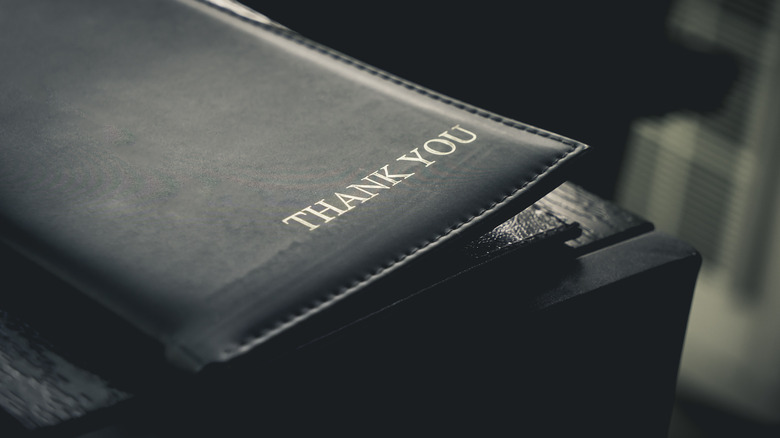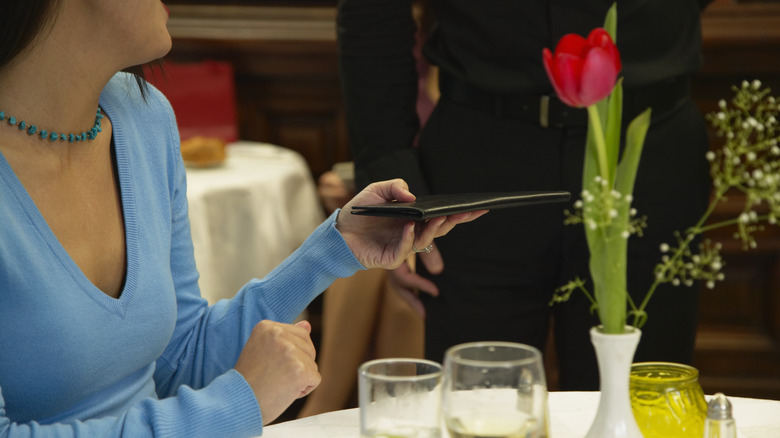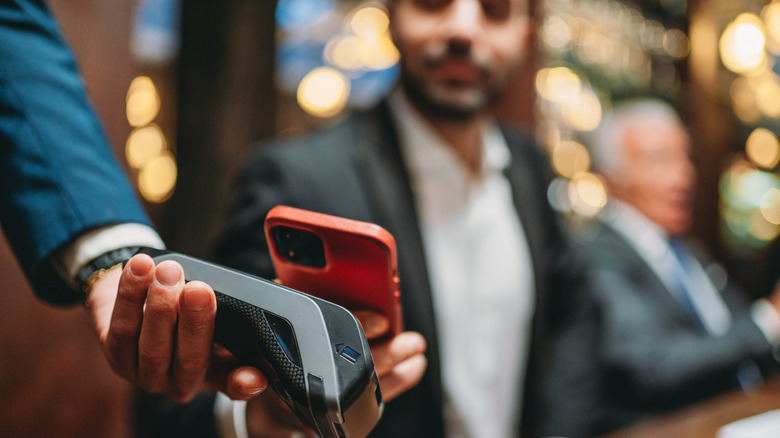Why It's Bad Etiquette To Linger After You Get The Check
Dining etiquette doesn't end the moment you finish eating. Good manners extend well past enjoying that last delicious morsel, and yes, there are rules regarding when it's appropriate to leave the table. These guidelines can vary, of course, depending on whether you're having dinner at someone else's house, or in a restaurant setting. For the former scenario, it's impolite to linger past 10:30 p.m. (11:15 p.m. on weekends), according to experts. In the latter, the clock starts ticking the moment the check hits the table.
This rule, like many etiquette standards, differs based on cultural cues, and this timing may be different in other countries. Italy, for example, is famously lenient in regards to post-prandial lingering. In the U.S., however, it's a general rule of thumb that diners should leave the restaurant within 15 minutes of getting the check, otherwise, it's considered a form of overstaying your welcome. Most people are careful to avoid this faux pas when dining in someone else's house, but may be less cognizant of it in a restaurant context where you are paying for the experience.
Why restaurant etiquette discourages lingering after a meal
Dining etiquette is designed to promote considerate and respectful behavior towards one's fellow diners, as well as to restaurants and their staff. The 15 minute rule, for example, evolved out of this spirit of consideration for others, as it impacts several groups of people, restaurant owners among them. Restaurants are very welcoming places and will try never to rush their guests. However, each restaurant needs to turn over its tables in a set amount of time each night to ensure profitability. In better restaurants, diners are generally expected to enjoy their meal and leave within about two hours.
Diners lingering too long after receiving the check can upset this fragile timing. It may not prevent the restaurant from being able to seat more people at the table, but it can cut down on the number of times the restaurant is able to turn over that table during the course of a night. This would also negatively impact servers, of course. Since servers work primarily for tips, having fewer people seated in their section is likely to result in reduced earnings for the evening.
Failing to make a timely exit may also prove an imposition to those waiting for a table, particularly if they've already made a reservation. So that's why the etiquette rule originated, and why it's best to take one's leave in a timely fashion after the check is presented.
How to properly finish a restaurant dinner
The 15 minute rule isn't the only etiquette admonition regarding the completion of restaurant meals that may not be common knowledge. In fact, most people who ignore these etiquette rules probably don't do so knowingly. They're simply unfamiliar with them, and the reasons they exist.
With that in mind, here are two more rules that will aid in making a graceful restaurant exit. One is to properly indicate that you've finished eating in a way that servers will instantly recognize. This involves the proper placement of silverware on your plate. To indicate that you're finished a course, place silverware on the plate in a diagonal fashion. The handles of the utensils should be at 4 o'clock, using the clock method. The business end (fork tines, knife blade, or spoon head), meanwhile, should point to 10 o'clock. If a knife was used, its blade should be pointed inwards, towards you.
If you've just finished the final course, you may place your napkin on the table as well. It goes to the left of your plate (or where the plate was), in the spot originally reserved for forks. Don't fold it. Just place it there naturally. Proper observance of these cues will help the server time out the delivery of your check, and ensure you don't feel rushed when it is time to pay and leave.



